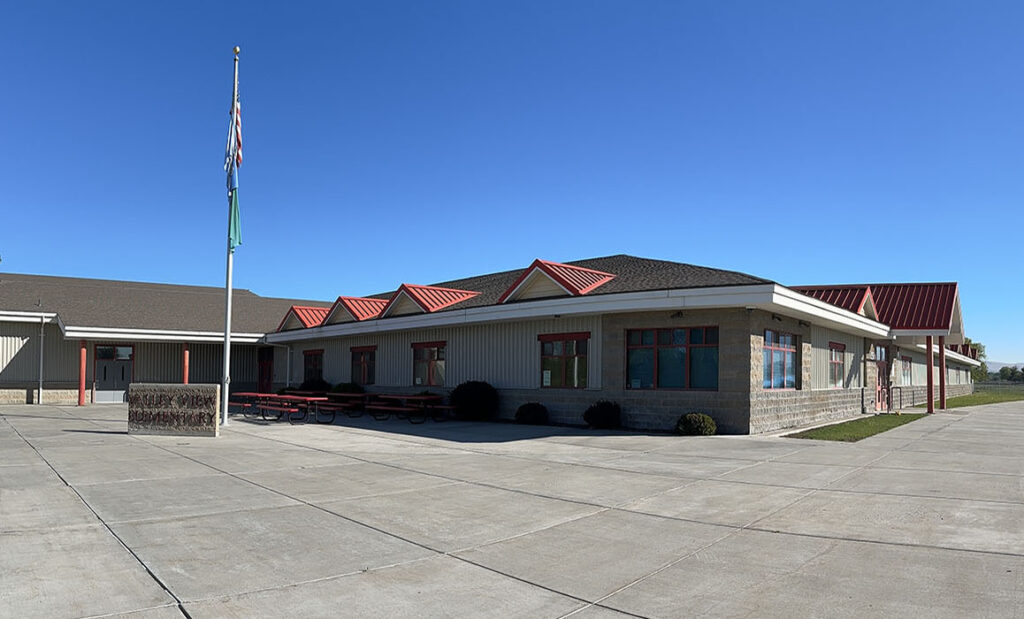
After budget cuts and a failed grant, Toppenish School District is powering forward with solar, batteries, and energy upgrades to protect its students and serve its community.
Success often begins with a setback. For Toppenish School District (TSD), a failed Commerce grant application in spring 2023 was a pivotal point in its effort to bring clean energy to their schools.
Toppenish School District (TSD), located in south-central Washington, serves around 4,200 students. More than 80% of the student population is Hispanic and approximately 8% are Native American. Over the past year, the district has faced major financial hurdles, including $9 million in budget cuts and rising energy costs due to aging infrastructure.
With no funding available for solar, a renewable energy project seemed out of reach. But perseverance paid off. Last spring, the district secured a $1.7 million clean energy grant to install a solar and battery storage system at Valley View Elementary, its largest elementary school.
Exploring possibilities through a feasibility study
Assistant Superintendent of Toppenish School District Shawn Myers is passionate about the environment — and supporting the students in his school district. He envisioned a clean energy solution that would keep the learning environment powered up without breaking the bank during the school year.
«We live in an area that receives 300 days of sunshine annually,” said Myers. “We should be able to harness that natural power to pay our bills, thus freeing up money we typically spend on operating costs to provide more direct services to kids.»
After the unsuccessful grant application – and based on the community’s vulnerability and strong project concept – TSD was referred to Commerce’s Energy Resilience Technical Assistance Program and Energy Resilience Specialist Kate Pedersen.
In October 2023, Commerce selected TSD to receive a no-cost study to evaluate the feasibility of a microgrid system at three of its schools through the TA program. The school district collaborated with Säzän Group, its subcontractors, and Commerce’s Technical Assistance program to conduct the study.
Completed in June 2024, the study recommended a solar and battery storage microgrid at Valley View Elementary.
Why Valley View?
Home to 450 students, Valley View is centrally located and plays an important role beyond education. During the pandemic, it served as a food distribution site and vaccine clinic. In times of crisis, it becomes a lifeline for the greater Toppenish community.
“Valley View is in the heart of our community,” said Assistant Superintendent Myers. “We realized that if we could keep the lights and heat on, we could keep offering essential services, even during outages.”
The community experienced about half a dozen power shutdowns due to wildfires in summer 2024. The new solar and battery system will help Valley View serve as a safe, powered-up emergency shelter for the greater community during disasters and prolonged power outages.
Funding the vision
Thanks to support from Commerce and the technical team, TSD secured a $1.7 million clean energy grant in 2024 to install the system at Valley View. On top of that, the district received two more grants –$744,760 in November 2024 and $261,453 in February 2025 – to install energy-saving LED lighting at several schools, including Toppenish Middle School, Valley View and Kirkwood Elementary.
Preparing the grant applications was no small task. When asked about the application process, Assistant Superintendent Myers said, “It was complicated, and very technical.” Luckily, they had Pedersen, Säzän Group, Spark Northwest, and MZ Solar to help them every step of the way.
“They were able to take all of those questions on and helped walk us through them,” said Myers. Their hard work paid off.
Building toward resilience
Progress is already underway. The roof at Valley View was replaced in spring 2025 to prepare for the solar panels. LED lighting installations are scheduled for May-June 2025, and the solar panel system will go in this summer. The battery backup is expected to be complete by June 30, 2026.
The clean energy improvements will help the district cut energy costs and keep classrooms running during outages. Just as importantly, they reflect a bigger goal: building resilience, equity and sustainability for the students and families of Toppenish.
When asked how they got through it, he said, “You work together, and you figure it out.”